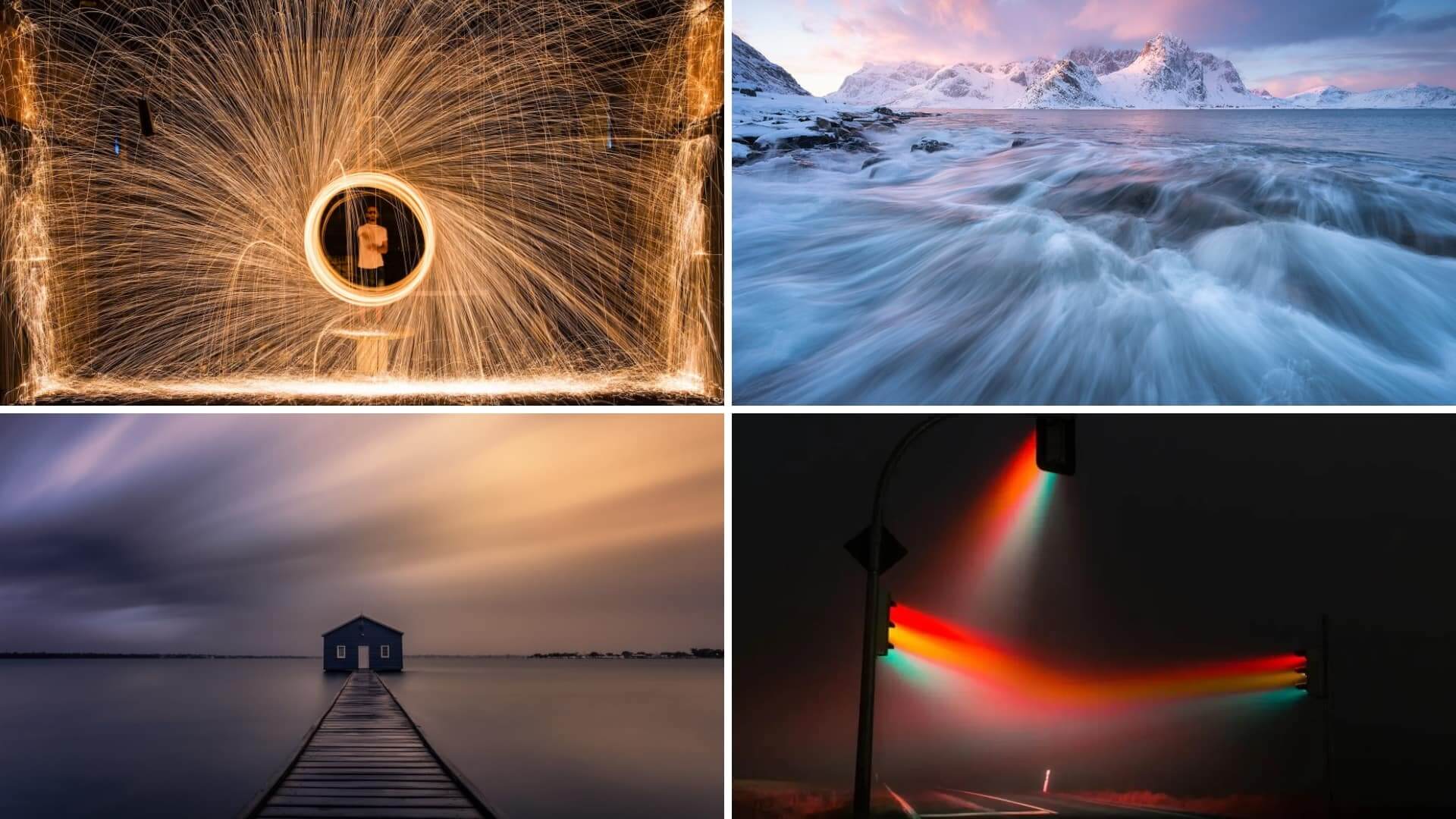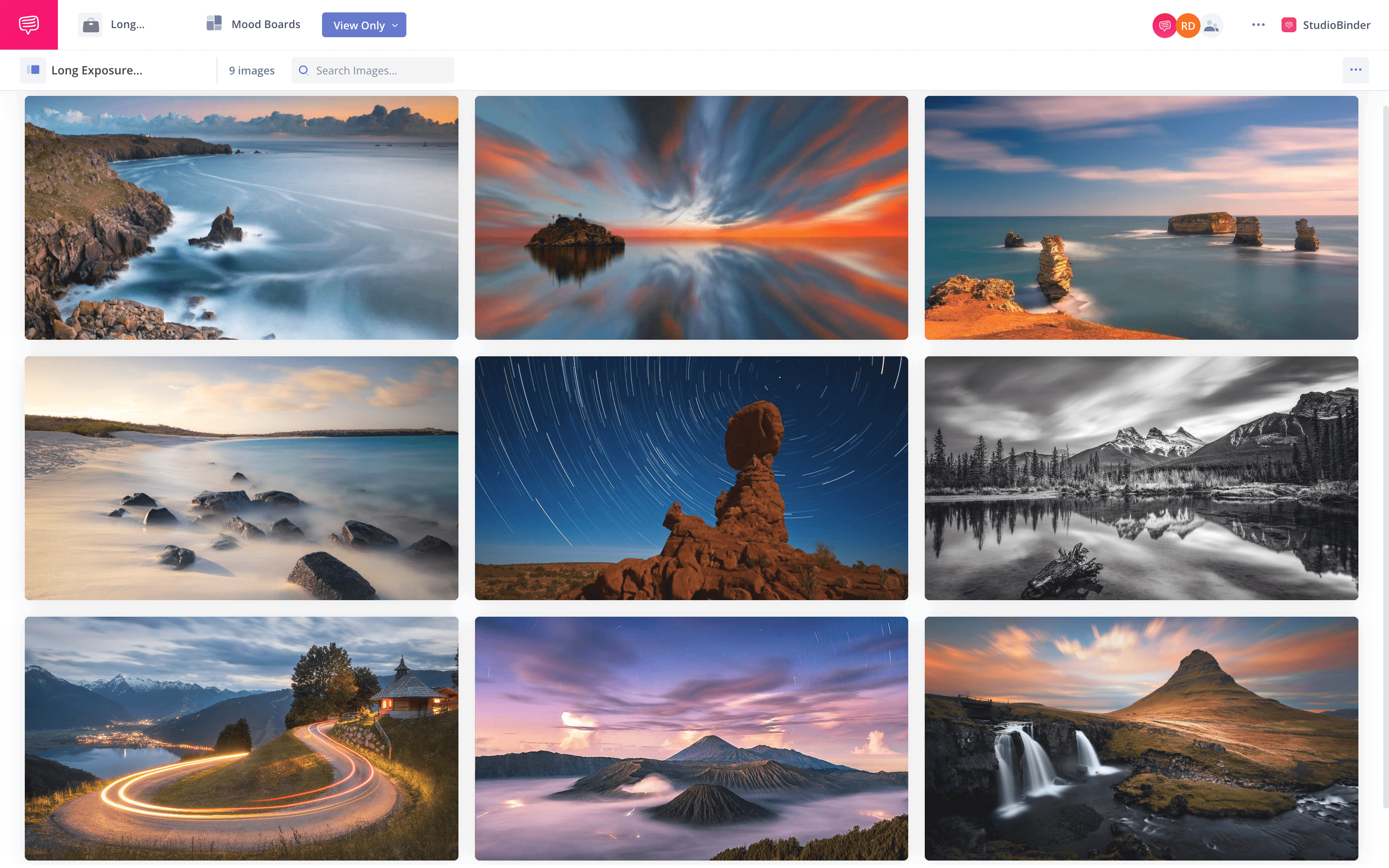L
ong-exposure photography, a magical intertwining of time and light, holds the potential to transform ordinary scenes into ethereal landscapes. It’s an intriguing blend of art and science that stretches the realm of possibility, capturing moments beyond what our eyes can perceive.
As we delve deeper into this fascinating world, we’ll unravel the secrets behind these mesmerizing images. This journey will equip you with the necessary knowledge and techniques, empowering you to create your own captivating long-exposure photographs.
What is long-exposure photography?
Let’s define long-exposure photography
So, let's begin our exploration by defining what we mean by 'long-exposure photography.' Understanding this concept is the first step towards capturing your own extraordinary images.
LONG-EXPOSURE PHOTOGRAPHY DEFINITION
What is long-exposure photography?
Long-exposure photography, often known as time-exposure or slow-shutter photography, is a technique that employs a lengthy shutter speed to sharply capture the stationary elements of an image while blurring or smearing the moving elements. The paths of moving light sources become prominent, and this technique is utilized to emphasize the contrast between time and movement within a static.
Characteristics of Long-Exposure Photography:
- Exaggerated Motion
- Light Manipulation
- Time Compression
- Artistic Effects
Long-Exposure Photo Technique
Characteristics of long exposure
The defining characteristics of long-exposure photography truly sets it apart from other photography techniques. These unique traits are what imbue long-exposure images with their distinctive charm, making them a captivating branch of the photographic arts.
Exaggerated Motion
A hallmark of long-exposure photos is the exaggerated depiction of motion. This technique allows photographers to capture a sense of movement in a static image, creating a dynamic and captivating visual story. Whether it's the smooth, serene flow of a river or the dramatic streak of a shooting star, long-exposure photography brings life and motion to your images.
Cascading Waterfalls: Long exposure can transform the rushing water into a silky, dreamlike flow, creating a sense of tranquility and beauty.
Meandering Rivers: By using long exposure, the movement of the river can be beautifully captured, resulting in a smooth and serene depiction of its journey.
Long-Exposure Waterfall Photography
Light Manipulation
Long-exposure photography offers unique control over light. With the shutter open for extended periods, more light is captured, enabling photographers to manipulate and enhance the illumination in their images.
Whether it's the ethereal glow of the Milky Way, vast landscape photography or the neon streaks of city traffic, the control of light can dramatically transform the mood and composition of your photographs.
Ethereal Clouds: Long exposure allows for the graceful movement of clouds to be captured, creating a sense of motion and adding a touch of magic to the sky.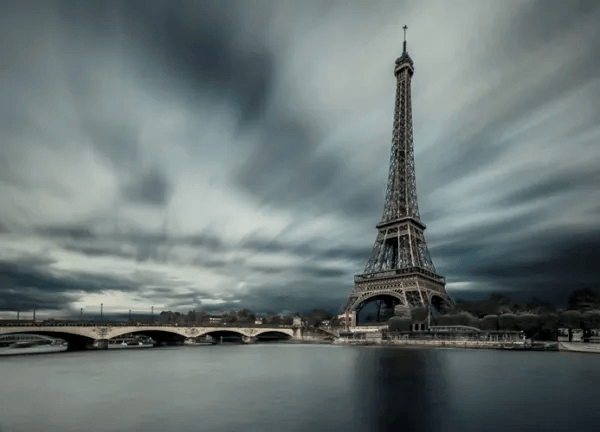
Cloud Long-Exposure Photography
Time Compression
One of the most intriguing aspects of long-exposure photography is its ability to compress time into a single image. By keeping the shutter open for prolonged periods, events that take minutes, hours, or even days can be captured in a single frame. This time compression can reveal patterns and phenomena that would be otherwise invisible to the naked eye.
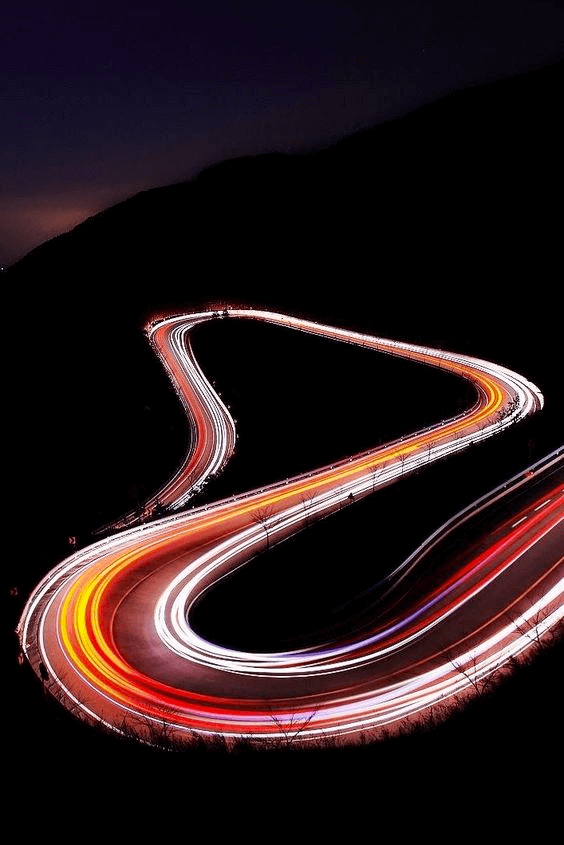
Traffic Long-Exposure Photography
Enchanting Car Headlights: When photographed with long-exposure, the streaks of car headlights create a mesmerizing effect, illuminating the night and adding a dynamic element to the composition.
Artistic Effects
Lastly, long-exposure photography lends itself to a variety of artistic effects. From the silky smoothness of flowing water to the swirling trails of stars across the sky, this technique opens up a realm of creative possibilities.
With some experimentation and a keen eye, long-exposure photography can push the boundaries of conventional photography, allowing you to create images that are nothing short of extraordinary.
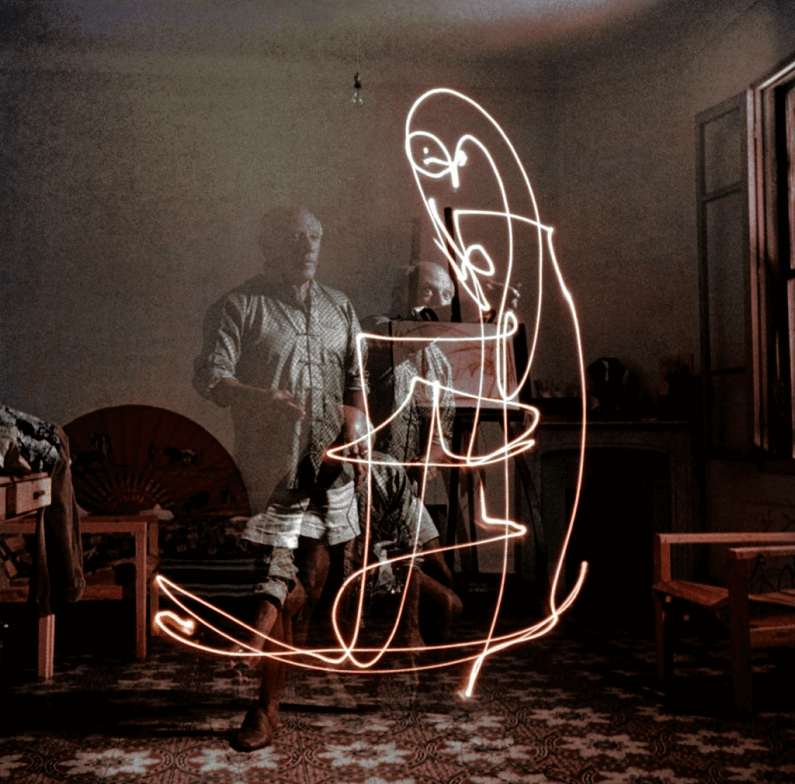
Pablo Picasso Light Painting
Light Painting: This is an exciting application of long-exposure photography where controlled movements of light sources, while the shutter is open, can create intriguing visual effects. The light becomes a paintbrush, the darkened scene is your canvas, and the photograph is your masterpiece.
Related Posts
Long-Exposure Camera Settings
How to take long-exposure photos
Shooting long-exposure photographs requires a certain level of technical understanding as well as creativity. The goal is to create a harmonious blend of motion and stillness within a single frame. Let’s start by taking a look at this comprehensive video guide by Josh Katz on long-exposure photography.
Long-Exposure Settings for Beginners
Below are some key steps and tips to help you embark on your long-exposure photography journey.
Equip Yourself Right
Invest in a sturdy tripod to ensure your camera remains steady throughout the lengthy exposure time. Additionally, a neutral density (ND) filter can be essential in managing the amount of light entering the camera, especially when shooting in bright conditions.
Understand Your Camera Settings
Shutter speed is of utmost importance in long-exposure photography as it directly affects the final outcome of the image. By controlling the length of time the camera's shutter is open, you can capture stunning effects like light trails or smooth water flows.
Slower shutter speeds, typically lasting a second or longer, allow more light to enter the camera sensor, resulting in beautifully exposed long-exposure photographs.
In our video breakdown of the exposure triangle and shutter speed, you’ll learn about the three components of exposure that can help you take better long-exposure photographs.
Exposure Triangle and Shutter Speed
Master the manual mode on your camera. Become familiar with adjusting aperture, shutter speed, and ISO to achieve the desired exposure. Often, a slow shutter speed, low ISO, and a narrow aperture work well for long-exposure shots.
Scouting and Composition
Find compelling scenes that feature a balance of movement and static elements. This contrast is what makes long-exposure photography so mesmerizing.
Think about how the movement will translate over time in your shot.
Shoot and Experiment
Begin shooting and don't be afraid to experiment. Adjust your settings as needed and remember to review each shot to understand the impact of your adjustments. Experiment with styles of photography such as portrait photography.
Long-exposure photography ideas
Post-Processing
Lastly, post-processing plays a crucial role in long-exposure photography. Software like Adobe Lightroom or Photoshop can help in enhancing details, adjusting exposure, and managing noise in your long-exposure shots.
Whether you're capturing the smooth flow of a waterfall, the hustle and bustle of city traffic, or the majestic motion of the night sky, every long-exposure image is a distinctive depiction of time.
So go ahead, experiment, learn, and let your creativity flow.
And for a general idea of the long-exposure photography, we've collected our favourite shots using StudioBinder's storyboard creator. Click the image below to explore the collection and you can even download a PDF for future reference and inspiration.
Long-Exposure Photography Moodboard • Click to view the entire collection
How to Do Long-Exposure Photography
Tips for long-exposure photography
As we delve deeper into the art and science of long-exposure photography, it's essential to equip ourselves with some handy tips and tricks. These insights will not only enhance the quality of your photographs but also provide a richer understanding of this fascinating form of art.
Use manual mode: Manual mode gives you full control over the camera settings, which is crucial for long-exposure photography.
Use a sturdy tripod: Since the shutter will be open for an extended period, any slight movement can blur the whole image. Use a tripod for sharp images.
Experiment with shutter speed: Different scenes and light sources will require different shutter speeds for the best results.
Use a wide-angle lens: A wide-angle lens can create a more dramatic long-exposure by capturing a wider field of view.
Invest in a neutral density filter: It reduces the amount of light entering the lens, allowing for slower shutter speeds even in bright daylight.
Long-exposure photography is a unique method that opens up a wide range of artistic opportunities, allowing us to capture elements often invisible to the naked eye. It's about recording the progression and fluidity of time in a way that transcends normal human perception.
To get started, all you need is your camera and an interesting scene to capture the interplay of light and time, which will result in a distinctive piece of art.
Up Next
What is Shutter Speed?
Now that we have a good understanding of the art and science behind long-exposure photography, it's the perfect time to dive deeper into one of its key components — the shutter speed.
Up Next: Shutter Speed Explained →
Showcase your vision with elegant shot lists and storyboards.
Create robust and customizable shot lists. Upload images to make storyboards and slideshows.
